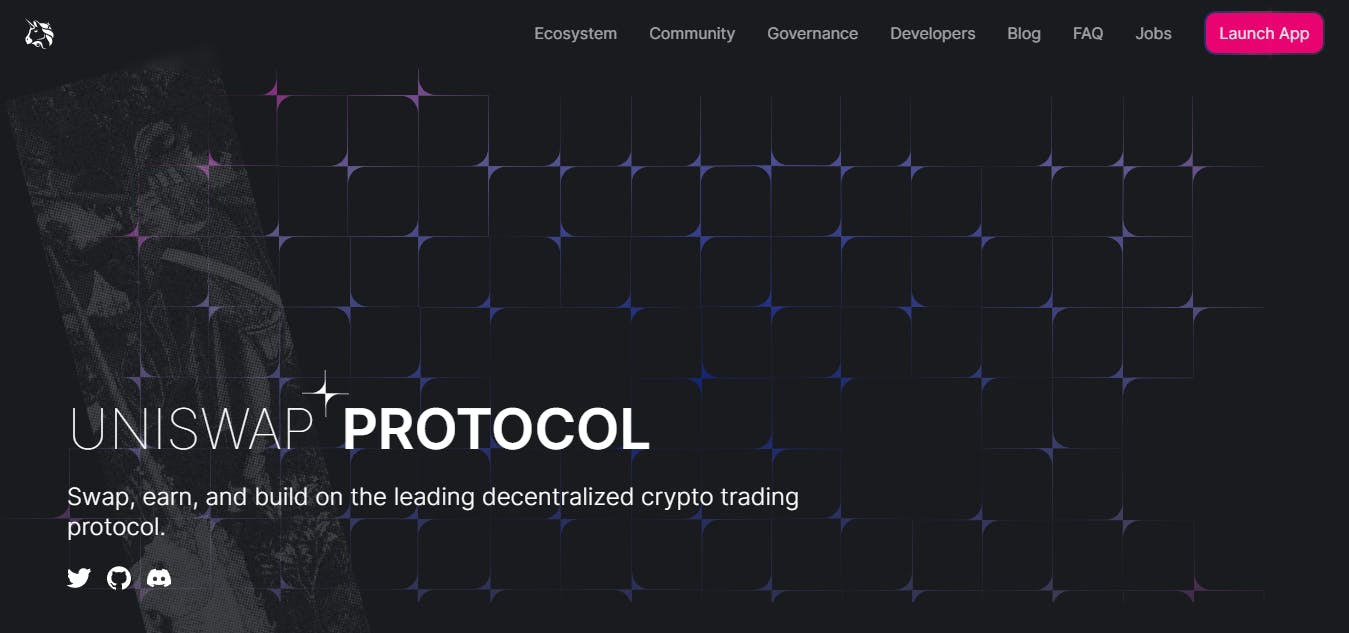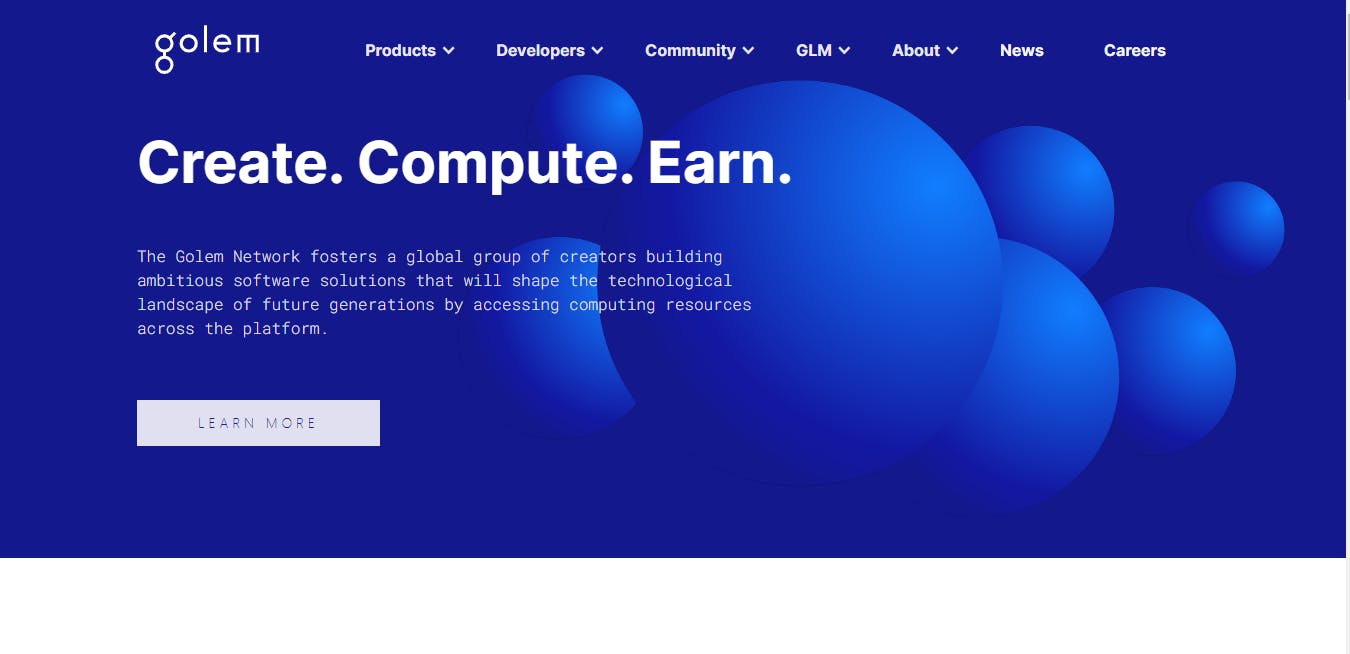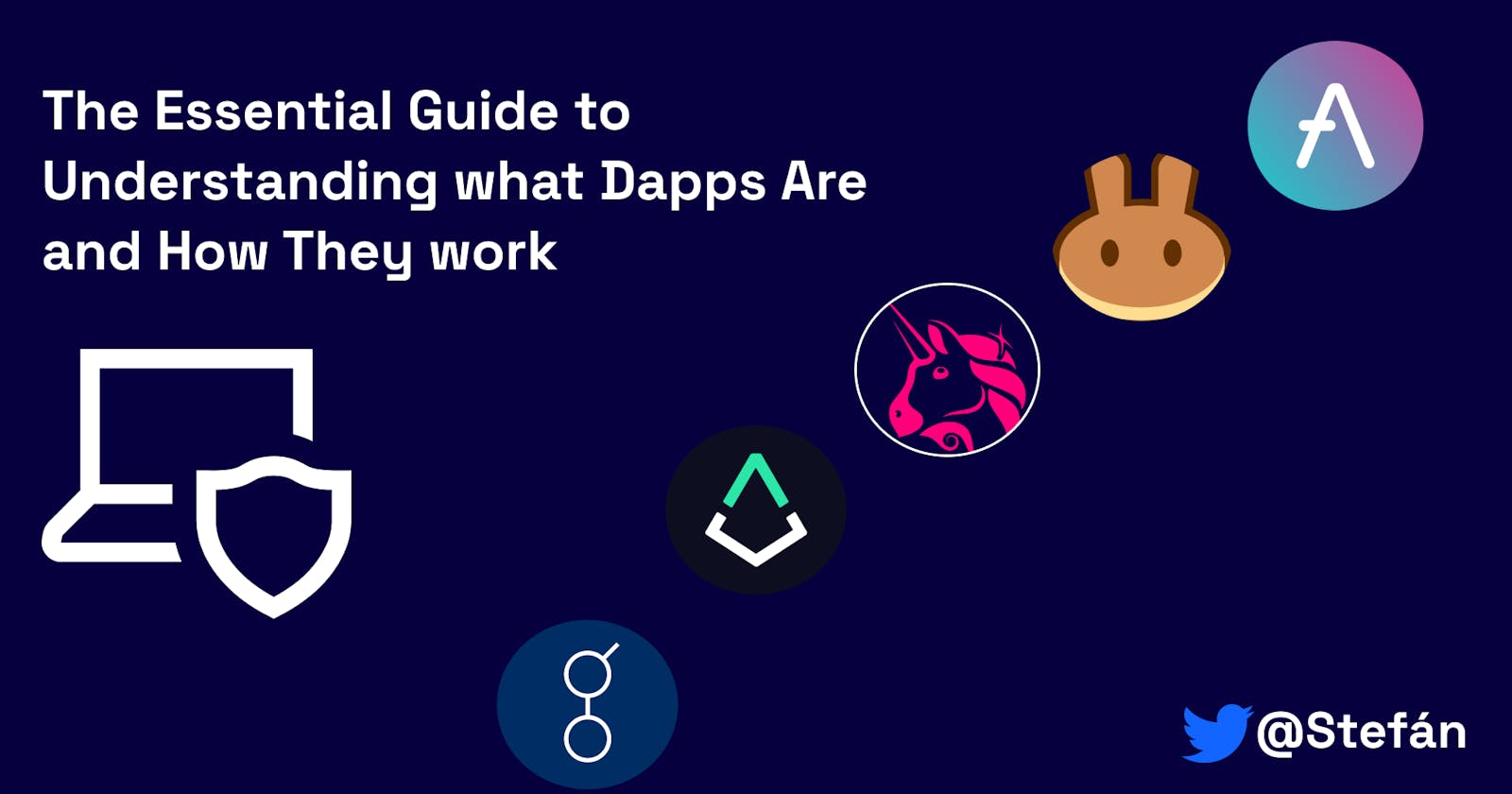The Essential Guide to Understanding what Dapps Are and How They work
Decentralized applications, or Dapps, are changing the way we interact with technology and the internet. Dapps are decentralized, meaning that they are not controlled by a single entity, but rather run on a network of computers. This new technology has the potential to revolutionize industries and bring about greater security, transparency, and decentralization in our online activities.
However, for many people, the concept of Dapps can be confusing and difficult to understand.
This article aims to provide a comprehensive and accessible guide to Dapps, explaining what they are, how they work, their potential benefits, challenges, use cases, and what to look out for as a user when selecting a Dapp. Whether you are a tech-savvy individual or a newcomer to the world of decentralized technology, this article will provide you with a solid foundation in understanding Dapps.
By the end of this article, you will have a clear understanding of this exciting new technology and its potential impact on the future.
What are Dapps?
Decentralized applications(also known as Dapps) are digital applications that run on a decentralized network which means that they are not controlled by a centralized entity or body. Dapps are built on decentralized technology known as the blockchain and use smart contracts to execute operations and manage data.
Dapps are also referred to as applications that are powered by smart contracts and run on the blockchain network.
Dapps looks and works as a regular mobile app on our smartphone and offers a wide range of functions varying from finance, gaming, and social media.
Types of Dapps
We have three types of Decentralized Applications.
Let's take a look at each of them:
Type 1 Dapps
Type 1 Dapps are applications that are built on the blockchain network and use its native token as the primary means of interaction.
Type 1 Dapps have their consensus mechanism which enables participants to mine and stake.
Examples of Types 1 Dapps include Bitcoin and Ethereum.
Type 2 Dapps
This type of Dapps relies on the blockchain of type 1 Dapp which is the bitcoin.
Type 2 Dapps operate using their protocols and tokens and they serve as a medium for decentralized exchanges or marketplaces.
Type 3 Dapps
These are Dapps that rely on the protocols of Type2 Dapps.
Type 3 Dapps also have the required token needed for them to function.
How do Dapps work?
Most of the applications and programs we use today are controlled by centralized organizations which give them full access to things like user data, control, and the user experience.
Let's use Twitter as a case study, Twitter has control over its user interface, and user data, they can disable the account of a Twitter user, censor contents and restrict user access to its platform which makes it centralized because the ownership and control lie with them and not the user this is where decentralization comes in, in this system censorship would be difficult due to the nature of the network which gives the users full ownership and control over their activities on the internet and cuts off the centralized bodies.
Decentralized applications(Dapps) work by leveraging the potential of the decentralized nature of the blockchain. They use smart contracts which is a piece of self-code that manages data and executes operations on the decentralized network to facilitate this process without the need for centralized bodies.
Examples of Dapps
In this section, we would be exploring some of the major Dapps which users to interact with the blockchain space and explore other fields such as finance, gaming, social media, and commerce.
So, without further ado, let's check out some of these major Dapps
Pancakeswap
Uniswap
Magic Eden
Aave
Zapper fi
Uniswap
Augur
Golem
PancakeSwap
Pancakeswap is a decentralized exchange that operates on the Binance Smart Chain (BSC). it allows users to trade cryptocurrencies without the need for intermediaries like centralized exchanges.
Pancakeswap is built on automated smart contracts deployed on the Binance Smart Chain, the crypto exchange run by the centralized exchange Binance.

Uniswap
Uniswap is a popular decentralized exchange. Uniswap allows users to trade cryptocurrencies and allows users to earn rewards by providing liquidity to the platform without the need for intermediaries. it operates on open-source software built on Ethereum.

Aave
Aave is a decentralized finance (DeFi) protocol that allows users to lend and borrow a wide variety of digital assets from Stablecoins to Altcoins without the need for banks. Aave is built on the Ethereum blockchain and uses smart contracts to facilitate peer-to-peer(P2P) transactions which provide a secure and transparent platform for decentralized applications to operate.

Magic Eden
Magic Eden is one of the most popular NFT marketplaces initially built on the Solana Blockchain. it allows users to mint, list, and trade digital assets including art, music, collectibles, and more through a seamless and decentralized medium.
Magic Eden offers a wide list of NFT collections that are issued on Solana, Ethereum, and Polygon Blockchain.

Zapper-fi
Zapper-fi is a dashboard or a portfolio management system that is used to monitor debts, investments, liquidity, and claimable rewards without collecting user data.
Zapper-fi allows users to manage their data across different protocols. Zapper-fi also gives users the ability to zap "in" and zap "out" of liquidity pools from platforms like Uniswap, Curve Finance and others.

Augur
Augur is an open-source decentralized protocol that allows users to create and trade prediction markets on a wide range of topics. it can be used on sports events, political outcomes, and basically, anything that revolves around the prediction market.
Augur operates on a set of open-source smart contracts written in Solidity that can be deployed on the Ethereum blockchain. participants use Ethereum and DAI to place bets on Augur.

Golem
Golem operates as a decentralized system wherein individuals can share their unused computing resources with the public, while also being able to receive payment in exchange for this contribution. This open-source platform utilizes the Ethereum Blockchain in order to facilitate payment transactions. Julian Zawistoskwi, the CEO of Golem, chose the name Golem due to its roots in Jewish folklore.

Benefits of Dapps
One of the most exciting developments in the world of blockchain technology is the rise of decentralized applications or Dapps. These applications are designed to operate in a decentralized and trustless manner, offering a range of benefits that traditional applications simply can't match. In this section, we'll take a closer look at some of the key benefits of Dapps and why they are quickly gaining traction in the digital landscape.
Decentralization
The benefit of Dapps lies in its decentralization, which means that it is not under the control of any single entity, giving users complete ownership over their actions.
Transparency
decentralized applications are known for their transparency in operations, unlike traditional applications which are opaque and difficult to audit. Dapps provide a very high degree of transparency and accountability as every transaction or activity made by the user can be seen on the network.
Immutability
Immutability generally means something that cannot be changed. immutability refers to the way that data is been stored and maintained on the blockchain network. in a decentralized system, data recorded on the blockchain network cannot be altered or deleted.
Open Source
Dapps are open source because the source code used to build them is intentionally made available to the public so anyone can modify, examine and use it. This encourages innovation and collaboration in decentralized space as developers are free to build and improve on new and existing features which boosts the performance of decentralized applications.
Censorship Resistant
Censorship resistance refers to decentralized applications being able to run or operate without the intervention of intermediaries or a third-party authority.
This is particularly important in countries where internet access is heavily regulated or where political leaders have a say in how some traditional apps work, as dApps can provide a platform for free expression and the exchange of ideas.
Accessibility
Accessibility is another amazing key benefit of Dapps as it allows users to be able to use this application provided that they are connected to the internet and have a compatible device to access this application.
Unlike traditional applications that may require expensive hardware or software licenses, Dapps can be accessed and used by anyone with a basic computer or mobile device.
Challenges of Dapps
Lacking user experience
One of the challenges we face when using Dapps is the lack of user experience. Majority of the decentralized applications currently existing are still in their initial stage of creation, which makes them less accommodating for less experienced users and the kind of applications they are used to.
Hard to use
Dapps can be difficult to use for non-technical users. the reason is that decentralized applications run on complex technologies like the blockchain, smart contracts, and cryptography can be difficult to understand and use effectively by a non-technical user.
Scalability
Scalability is a major challenge for decentralized applications due to slow transaction times and high fees during periods of high network usage. With more users and applications joining the network, the strain on the network and decreased performance become more obvious as the amount of data to be processed grows exponentially.
Interoperability
Interoperability means that different blockchains and decentralized networks can communicate and work with each other seamlessly. However, there are currently different blockchain platforms and networks, each with their own protocols, standards, and features, which can make it challenging for developers to build applications that can communicate with different blockchain networks.
Immutability
Immutability presents two challenges the inability to correct errors or mistakes, and the risk of privacy breaches. In industries like finance or healthcare, where data accuracy and integrity are critical, the inability to correct errors poses a significant issue. Additionally, the nature of data being unchanged on the blockchain increases the risk of hackers exploiting sensitive information.
Use cases of Dapps
Social media
Gaming
Prediction market
Education
E-commerce
Financial Services
What to look out for when selecting a Dapp
Security
Ensuring the security of a Dapp is of utmost importance, given the involvement of sensitive information, financial assets, and personal details. If a Dapp's security measures are inadequate, it can be susceptible to attacks, leading to substantial financial losses or data compromises that can jeopardize individuals' privacy.
Decentralization
Decentralization is crucial for Dapps as it allows for direct transaction and communication between users without the involvement of intermediaries. Opting for a decentralized Dapp offers advantages such as transparency, security, resistance against censorship, and user autonomy.
Adoption
The term "adoption" here pertains to the quantity of users and degree of usage for the Dapp. Opting for a Dapp with substantial adoption rates can result in an active and thriving user community, leading to a superior user experience, additional features, and increased usefulness. Therefore, it is recommended to select a Dapp with a significant adoption rate and monitor the community activity.
User interface
While choosing a Dapp, it is essential to take into account the user interface (UI). This is because a Dapp with a smooth UI can provide a great user experience and make it easier for users to complete their tasks.
Technology
The security, scalability, performance, and functionality of a Dapp can be impacted by the technology that is utilized to construct it. Therefore, it is vital to investigate the underlying technology before choosing a Dapp to ensure a dependable and credible user experience.
Governance
Governance involves the systems and procedures used to oversee and sustain the Dapp. It's crucial to assess the governance approach of a Dapp and confirm that it encourages community involvement, transparency, and decentralization. A well-governed Dapp can enhance trust and guarantee the longevity of the platform.
Community
A robust community is beneficial for Dapp users encountering technical problems as it can provide support. Additionally, users can offer constructive criticism to developers, improving the app's functionality and user experience. Developers who are responsive to community feedback are more likely to create a product that caters to their users' needs.
Conclusion
Dapps offer numerous benefits over centralized applications, including secure data storage and transparent record-keeping. However, challenges must be addressed for widespread adoption. Understanding the different types of Dapps, their use cases, and what to look for when selecting one can help you make informed decisions and fully leverage their potential.
I hope this article has provided you with valuable insights into the world of Dapps and inspired you to explore their possibilities.
If you have any feedback or questions, please feel free to leave a comment below or reach out to me directly. I would love to hear your thoughts on this topic and continue the conversation.

